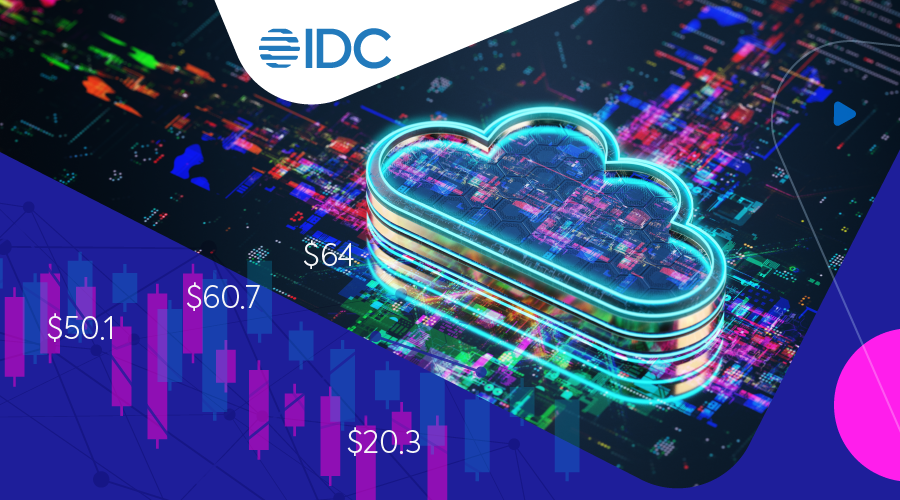
Cloud computing was originally pitched as a cost-savings alternative to traditional IT infrastructure. The concept was simple: only purchase what you need and adjust those resources up and down based on demand. This eliminated large up-front costs and made it possible to right-size the amount of compute and storage infrastructure based on a specific workload.
While that might have been true in the beginning, CIOs are finding themselves in a different situation today. According to IDC research, 64 percent of organizations are spending more on cloud than originally budgeted. And as cloud continues to become a larger portion of overall IT spend, there is intense interest in how to manage and ultimately optimize those costs.
This has led to the creation of FinOps – a cloud financial management discipline and cultural practice that enables organizations to get maximum business value by helping engineering, finance, technology, and business teams to collaborate on data-driven spending decisions. It encompasses a combination of people, processes, and software-based automation.
In its yearly IT industry predictions, IDC identified two related to the practice of FinOps:
- Complexities of digital business and IT budget pressures will drive 70% of Global 1000 companies by 2024 to increase FinOps maturity with granular chargebacks, benchmarking, and multiple cloud optimization.
- By 2027, AI-enabled automation will ensure consistent digital infrastructure configuration, performance, cost, and security by reducing the need for human operations intervention by 70% and improving SLOs.
The first prediction, related to maturity, organizations are now quickly realizing that managing costs across multiple clouds is extremely challenging. Each organization has its own portfolio of resource types with differing pricing models, and often multiple clouds, which takes more than a simple approach to address. This leads to the second prediction: to be effective with FinOps, an automation strategy is needed.
However, the way an application is architected influences cloud costs, and for most organizations they are not managed by a single department. Legacy applications, for example, are often hosted in large virtual machines that are not efficient with resources, which can have a significant impact on costs. While modern applications, that take advantage of cloud-native microservices and containers, require granular resource management and automated scaling, which directly impact cloud costs.
Beyond the construction of an application or cloud workload, on going operational management also impacts cloud costs. Just like it is a good practice to turn off the lights at the end of the workday, it is also essential to manage when cloud resources are spun up and down as well as drive efficiency in compute by picking the best instance type or in storage, the right tier of performance. All this is to say that it’s easy to see how there’s no one group for the CFO to target to help solve the growing cloud cost concern and why establishing a FinOps function that looks holistically at all factors that affect cost is needed.
Moreover, to be effective in maximizing the value of cloud, it is essential to develop a FinOps practice that spans multiple areas of the organization. This includes not only the people in those functional areas but also software that continuously monitors multi-cloud environments and provides actionable intelligence to key stakeholders. If done in a one-off or reactive manner, there is increased potential for the burden to be placed on a single group which creates friction between teams and leads to additional resource waste and performance problems.
As deployments become more complex, FinOps strategies must be embedded in cloud operations processes and practices as they are inextricably linked and directly impact each other. The key is to recognize the interplay between cloud infrastructure optimization and cost efficiency, linking those two areas together to maximize value to the business.
In the IDC Intelligent Cloud Operations Survey, 50% of organizations are giving budget priority to AI and ML software that can automate the transparency and management of cloud costs and infrastructure. The process begins with observability. The ability to provide accurate reporting and analytics based on continuous feedback from the cloud environment enables all stake holders to fully understand current utilization. This also enables developers to implement a data-driven approach to architecting their applications by automatically bringing FinOps insights upstream into the design process. And it allows operations teams to identify and automatically prevent incorrect or overprovisioned resources, reducing waste. It helps procurement automatically manage and optimize commitment portfolios while allocating cloud consumption to business units, projects, or other organizational constructs.
Here is my advice for success:
- Create a culture that values multi-discipline accountability and collaboration for cloud cost optimization.
- Implement software-based FinOps automation that is enhanced with AL and ML capabilities.
- Think holistically about applications and infrastructure that are deployed across multiple clouds (including SaaS applications) to eliminate blind spots.
Message from Spot
We aim to help organizations embed FinOps processes within their cloud operations to drive continuous consistency, efficiency, and optimization that support FinOps goals. By operationalizing FinOps, organizations can generate immediate and increasing cost savings, gain a continuously efficient cloud infrastructure, and benefit from actionable intelligence that drives impactful business decisions: https://spot.io/solutions/finops/

